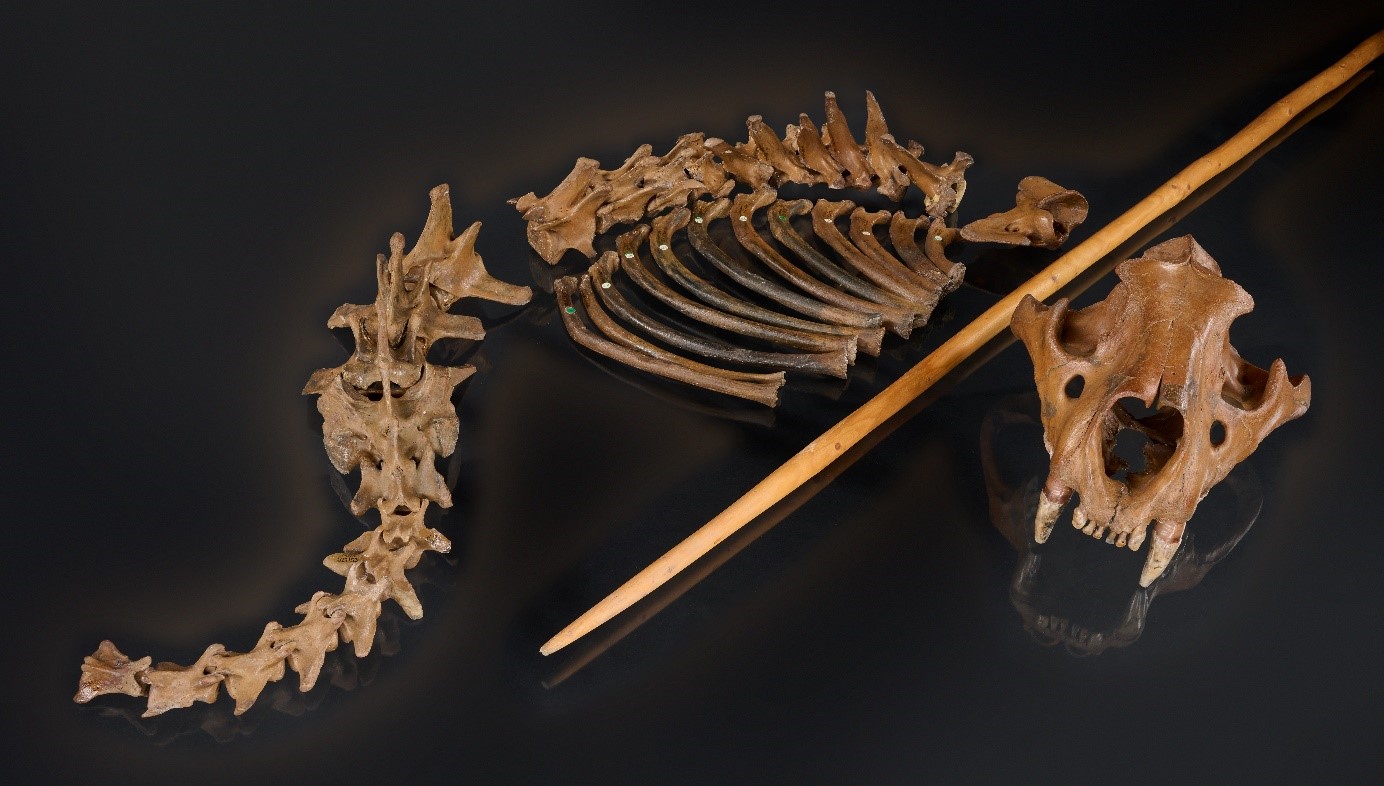A fancy fur pelt and some unusual bone markings have provided the first direct evidence of Neanderthals hunting cave lions. Not only that, but the artifacts also signify the earliest direct instance of a large predator kill in human history.
The first piece of evidence comes from the remains of a Eurasian cave lion, dated to 55,000 to 45,000 years old, discovered at Unicorn Cave in Germany. Early archaeologists in the 17th century believed this cavern contained unicorn bones – spoiler: it didn’t – but it later transpired it was home to something no less mysterious: Neanderthals.
The researchers believe the bony remains found here once formed a lion skin pelt, which was then abandoned at the site. Most incredibly, it looks like the pelt was fashioned to include the paw bones of the lion’s claw. This was no accident, the researchers argue, and indicates that exceptional care was taken to craft this special piece of clothing.
“It’s especially cool because we know that Neanderthals were using pelts, they were using the skin probably for regulating the temperature of their bodies. But the fact that they kept the claw within the skin is unique,” Gabriele Russo, lead study author and zooarchaeologist at the University of Tübingen in Germany, told IFLScience.
“[To include the claw] it requires much more time. It’s economically much more costly to do, you need to pay much more attention. The significance of this lion pelt is not only the fact that it’s associated with a large carnivore that was so charismatic, but also the fact that the whole processing of the skin needs to be much more in-depth,” he added.
The question is why a Neanderthal would go to such lengths to include this aesthetic feature in a pelt. We can never know for sure, but it does strongly indicate that the pelt wasn’t merely a practical item of clothing.
“There are studies that show large carnivores skins are useful for thermoregulation as opposed to, for example, a bison skin. However, the fact that it had a claw attached to it would have made it a bit uncomfortable to wear all the time, so it is possible that it was used on particular occasions,” Russo explained.
“Maybe during some sort of rituals or some special day. It could also be used as elements for teaching, for example, to show to other people of the group what a predator looks like and [how] dangerous it can be,” he continued.
Alternatively, Russo speculates that it could have been a trophy, used to show off the bravery and hunting skills of this Neanderthal clan.
The cave lion remains from Siegsdorf are displayed alongside a reproduction of a wooden spear similar to those used by Neanderthals.
Image credit: Volker Minkus. ©NLD.
There is also direct evidence that Neanderthals weren’t simply scavenging cave lions, but actively hunting them. The researchers studied a near-complete cave lion skeleton found in Siegsdorf, pictured above. Along with cut marks showing the animal’s body was butchered, they even found a puncture wound on the inside of the lion’s third rib that strongly suggests it was stabbed with a spear.
“We figured out that was not carnivore puncture, for many reasons. Simplest of all, usually when a carnivore bites over a bone, you have the imprints of the bite on both sides of the bone. This only has one side puncture,” Russo explained.
Cave lions roamed parts of Ice Age Eurasia until they fell into extinction 13,000 years ago. Slightly larger than a modern lion, they were apex predators and would have not been easy to hunt. This begs another question: why did Neanderthals take the risky option of hunting a ferocious predator when they could have targeted a harmless herbivore?
Perhaps they killed it out of defense or maybe some Neanderthals tried to make the most out of a chance encounter with a weakened, older lion. However, the researchers don’t believe the killing was purely out of necessity. Perhaps instead, it was a matter of pride, ego, and a deep cultural connection to lions – not dissimilar to the traditions of Homo sapiens today.
“I think this represents some sort of evidence of a cultural relationship between lions and Neanderthals,” Russo told IFLScience. “Such predator probably had a major role in their life.”
“If you seek prestige, then you hunt something that’s more dangerous and rarer to look better in front of your group,” he added. “Like the Maasai do today, they go and they seek prestige hunting lions.”
The study is published in the journal Scientific Reports.
Source Link: First Clear Evidence Of Neanderthals Hunting Lions Shows They Were Not Boneheads
